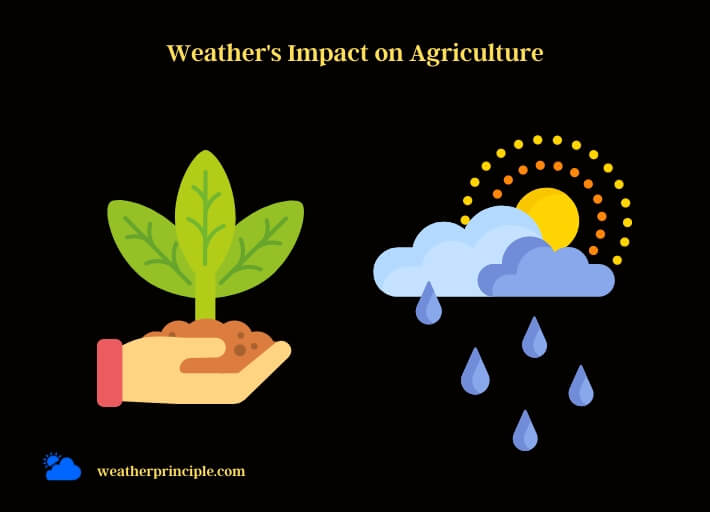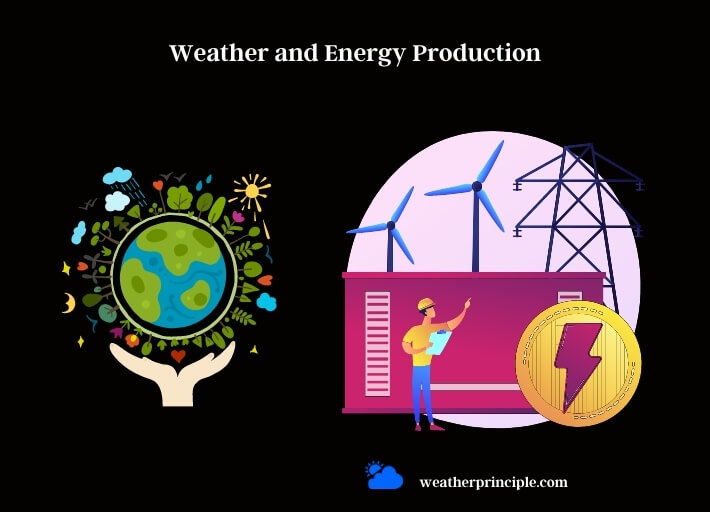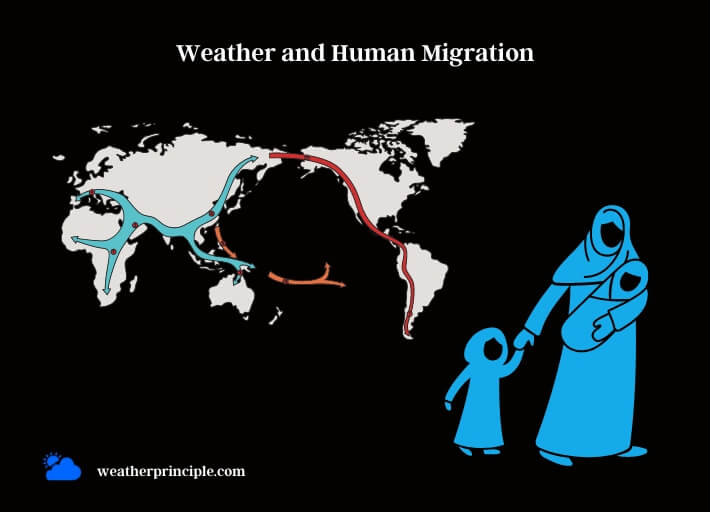Published on: May 7, 2023
Written by Shaown Khan / Fact-checked by Kader Khan
Weather plays an essential role in our daily lives, shaping the way we live, work, and interact with each other. As climate change continues to intensify, it becomes even more critical for us to understand the impact of weather on various aspects of human activity. In this comprehensive article, we will explore the intricate relationship between weather and human activities, diving deep into various aspects such as agriculture, transportation, urban planning, public health, energy production, economy, migration, and more.
Introduction
The importance of weather in human life
Weather affects our lives in various ways, from the clothes we wear and the food we eat to the activities we engage in and our overall well-being. As the world’s climate changes, it becomes more crucial than ever for us to understand these impacts and adapt our lifestyles accordingly.
The history of weather forecasting and its impact on human activities
Since ancient times, people have relied on the ability to predict weather patterns to make informed decisions about agriculture, transportation, and other daily activities. Over the years, advances in science and technology have significantly improved our forecasting capabilities, enabling us to better prepare for and cope with extreme weather events.
Weather’s Impact on Agriculture
The role of weather in crop growth and yields
Agriculture is heavily dependent on weather, as temperature, precipitation, and sunlight are vital factors that influence crop growth and yields. In some regions, farmers rely on specific weather patterns for successful cultivation, while others have developed innovative farming techniques to cope with extreme conditions.
Climate change and its effects on agriculture
As global temperatures rise and precipitation patterns shift, agricultural systems worldwide are under increasing strain. Some regions are experiencing more frequent and severe droughts, floods, and storms, leading to crop failures and food shortages. Farmers must adapt their practices and develop new strategies to ensure food security in the face of these challenges.

Farming techniques to cope with extreme weather conditions
To combat the adverse effects of extreme weather, farmers have adopted various techniques, such as crop rotation, drought-resistant crops, and precision agriculture. These practices aim to increase resilience and reduce the vulnerability of agricultural systems to changing weather patterns.
Weather and Transportation
Road safety and weather conditions
Weather can significantly impact road safety, with heavy rain, snow, and fog posing risks for drivers. These conditions can reduce visibility, make roads slippery, and increase the likelihood of accidents. Authorities often issue weather warnings and provide guidance on safe driving practices during extreme conditions.
The impact of weather on air travel
Severe weather events can cause flight delays, cancellations, and even accidents, disrupting air travel worldwide. Airlines and airports rely on accurate weather forecasts to minimize disruptions and ensure the safety of passengers and crew.
Waterways during extreme weather
Maritime transportation is also heavily influenced by weather, with storms, high winds, and waves posing significant risks to ships and their cargo. Modern navigation systems and weather prediction technologies have improved maritime safety, but extreme weather events continue to challenge the shipping industry.

Weather and Urban Planning
The role of climate data in city planning
Urban planners rely on climate data to make informed decisions about infrastructure development and land use. This information helps them design cities that are more resilient to extreme weather events, reducing the risk of flooding, heatwaves, and other weather-related hazards.
Designing infrastructure to withstand extreme weather
In response to the growing threat of climate change, urban planners are focusing on designing infrastructure that can withstand extreme weather events. This includes constructing buildings that are more energy-efficient, using materials that can endure high temperatures, and implementing innovative stormwater management systems to reduce flooding risks.
Climate-resilient cities of the future
As we continue to experience the effects of climate change, creating climate-resilient cities is becoming increasingly important. These cities incorporate strategies such as green spaces, cool roofs, and permeable pavement to mitigate urban heat islands, reduce flood risks, and improve overall quality of life for their inhabitants.
Weather and Outdoor Recreation
The impact of weather on outdoor sports and activities
Weather plays a significant role in determining the types of outdoor sports and activities that people can enjoy. Sunshine, rain, snow, and wind all have distinct effects on various recreational pursuits, from skiing and snowboarding to hiking and surfing. Consequently, weather forecasts are crucial for planning outdoor adventures.
Extreme weather sports and the role of risk assessment
Some outdoor enthusiasts seek thrills through extreme weather sports, such as storm chasing, tornado surfing, or ice climbing. These activities come with inherent risks, and participants must carefully assess weather conditions and their potential dangers before engaging in such pursuits.
The role of weather forecasting in recreational planning
Accurate weather forecasts are vital for ensuring the safety and enjoyment of outdoor recreation. Advances in forecasting technology allow individuals to plan their activities more effectively, helping them avoid adverse weather conditions and stay safe during their pursuits.
Weather’s Influence on Public Health
Weather-related diseases and illness patterns
Weather can directly affect public health by influencing the prevalence and transmission of various diseases. For example, high temperatures can increase the risk of heat-related illnesses, while heavy rainfall can lead to the spread of waterborne diseases. Additionally, climate change is expected to exacerbate these risks in the coming years.
Mental health and weather conditions
Weather can also impact mental health, with seasonal changes and prolonged periods of extreme conditions linked to mood disorders such as Seasonal Affective Disorder (SAD) and anxiety. Understanding the relationship between weather and mental health can help individuals and healthcare providers develop strategies to mitigate these effects.
Strategies to cope with weather-related health risks
To minimize the health risks associated with extreme weather, public health authorities and individuals can implement various strategies, such as establishing early warning systems, promoting heatwave preparedness, and encouraging vaccination against climate-sensitive diseases.
Weather and Energy Production
The influence of weather on renewable energy sources
Weather plays a crucial role in the production of renewable energy, as solar, wind, and hydroelectric power generation are all directly affected by weather conditions. Variability in weather patterns can impact the reliability of these energy sources, making it essential to develop effective energy storage solutions and grid management strategies.

Climate change and the future of energy production
As the world continues to grapple with the effects of climate change, the need for clean and sustainable energy sources becomes increasingly urgent. By understanding the relationship between weather and energy production, we can invest in the development and implementation of innovative renewable energy technologies to reduce greenhouse gas emissions and combat climate change.
Weather-related challenges for traditional energy sources
Extreme weather events can also disrupt traditional energy sources, such as fossil fuels and nuclear power. Storms, floods, and heatwaves can damage infrastructure, cause power outages, and create safety hazards. As a result, the energy sector must adapt to these challenges and prioritize the development of more resilient energy systems.
Weather and the Economy
The cost of weather-related disasters
Severe weather events, such as hurricanes, floods, droughts, and heatwaves, can have devastating consequences on local and global economies. These disasters often result in significant financial losses due to property damage, infrastructure destruction, agricultural losses, and disruptions to businesses and supply chains.
Weather’s impact on consumer behavior
Weather also influences consumer behavior, as it affects shopping habits, travel decisions, and overall spending patterns. For instance, seasonal changes can lead to fluctuations in the demand for various products and services, while extreme weather events can discourage people from engaging in certain activities or making purchases.
The role of weather in shaping global trade
Global trade is not immune to the effects of weather, as fluctuations in temperature and precipitation can impact the production and availability of goods. Additionally, extreme weather events can disrupt transportation networks, causing delays and affecting the flow of goods between countries.
Weather and Human Migration
Climate change and migration patterns
As climate change exacerbates extreme weather events and alters ecosystems, human migration patterns are also being affected. People are increasingly forced to leave their homes due to the effects of climate change, such as rising sea levels, severe droughts, or devastating storms, leading to the displacement of millions of individuals worldwide.

The socio-economic implications of weather-induced migration
Weather-induced migration can have significant socio-economic implications, as it affects the labor market, housing availability, public services, and social cohesion in both sending and receiving communities. Governments and international organizations must work together to address the challenges posed by climate-induced migration and support the affected populations.
The role of international policy in addressing weather-related migration
International policy plays a crucial role in addressing weather-related migration by promoting cooperation between countries and developing strategies to mitigate the impacts of climate change. This includes providing financial and technical assistance to vulnerable nations, supporting adaptation efforts, and fostering dialogue on the topic of climate-induced migration.
The Art of Weather Forecasting
The science behind weather prediction
Weather forecasting relies on the collection and analysis of atmospheric data to predict future weather conditions. Meteorologists use sophisticated computer models, satellite imagery, and ground-based observations to develop forecasts that help us prepare for and respond to various weather events.
The role of technology in improving weather forecasting
Technological advancements have significantly improved the accuracy and reliability of weather forecasts in recent years. High-resolution satellite imagery, advanced computer models, and innovative data processing techniques have all contributed to our ability to predict weather patterns more accurately and further into the future.
The future of weather prediction and its impact on human activities
As weather forecasting technology continues to evolve, it is expected to have an even greater impact on human activities. More accurate and timely forecasts will enable better planning and decision-making across various sectors, from agriculture and transportation to public health and emergency management.
Conclusion
The interconnectedness of weather and human activities
Weather is deeply intertwined with all aspects of human activity, from agriculture and transportation to urban planning, public health, and beyond. As we continue to experience the effects of climate change, understanding these relationships becomes increasingly important.
The importance of understanding and adapting to weather’s impact on our lives
By recognizing the profound impact of weather on our lives, we can make informed decisions and adapt our lifestyles to create a more sustainable future. This includes developing innovative solutions to mitigate the effects of extreme weather events, investing in renewable energy sources, and fostering international cooperation to address climate change.
The role of collective action in addressing climate change and its effects
Addressing the challenges posed by climate change and its effects on weather and human activities requires collective action from individuals, communities, governments, and international organizations. By working together, we can develop effective strategies and policies to reduce greenhouse gas emissions, enhance our resilience to extreme weather events, and ultimately create a more sustainable and prosperous future for all.
Summary
In this comprehensive article, we have explored the intricate relationship between weather and human activities, diving deep into various aspects such as agriculture, transportation, urban planning, public health, energy production, economy, migration, and more. By understanding the profound impact of weather on our lives, we can make informed decisions and adapt our lifestyles to create a more sustainable future.
Frequently Asked Questions (FAQs)
How does weather impact agriculture and crop yields?
Weather plays a significant role in crop growth and yields, as temperature, precipitation, and sunlight are vital factors that influence crop success. Climate change and shifting weather patterns can lead to droughts, floods, and storms, affecting crop yields and food security.
What are the consequences of extreme weather events on transportation systems?
Extreme weather events can cause disruptions to transportation systems, including road accidents, flight delays and cancellations, and risks to maritime transportation. Accurate weather forecasts and improved infrastructure can help minimize these disruptions and ensure safety.
How do weather patterns influence urban planning and infrastructure design?
Urban planners rely on climate data to design cities that are more resilient to extreme weather events. This includes constructing energy-efficient buildings, using materials that can endure high temperatures, and implementing innovative stormwater management systems to reduce flooding risks.
Can weather conditions have a significant effect on human health?
Yes, weather conditions can directly affect public health by influencing the prevalence and transmission of various diseases. Additionally, weather can also impact mental health, with seasonal changes and prolonged periods of extreme conditions linked to mood disorders.
What role does weather play in shaping the economy and consumer behavior?
Weather influences consumer behavior, affecting shopping habits, travel decisions, and overall spending patterns. Extreme weather events can also lead to significant financial losses due to property damage, infrastructure destruction, agricultural losses, and disruptions to businesses and supply chains.
How are technological advancements improving weather forecasting accuracy?
Technological advancements, such as high-resolution satellite imagery, advanced computer models, and innovative data processing techniques, have significantly improved the accuracy and reliability of weather forecasts, enabling better planning and decision-making across various sectors.
What are some ways humans have adapted to extreme weather conditions throughout history?
Throughout history, humans have developed various techniques to cope with extreme weather conditions, such as building climate-resilient infrastructure, adopting innovative farming practices, and creating early warning systems to prepare for and mitigate the impacts of severe weather events.



